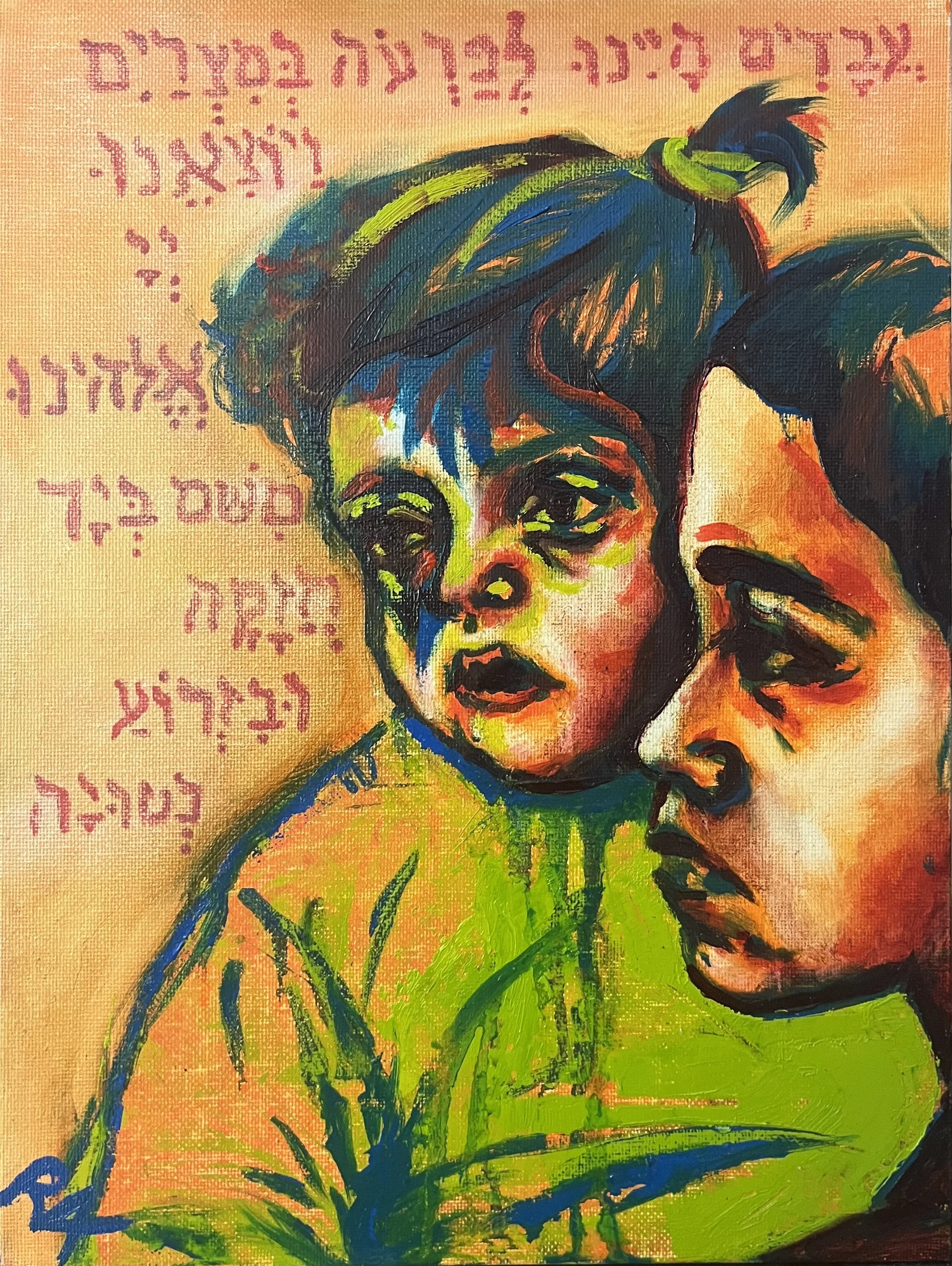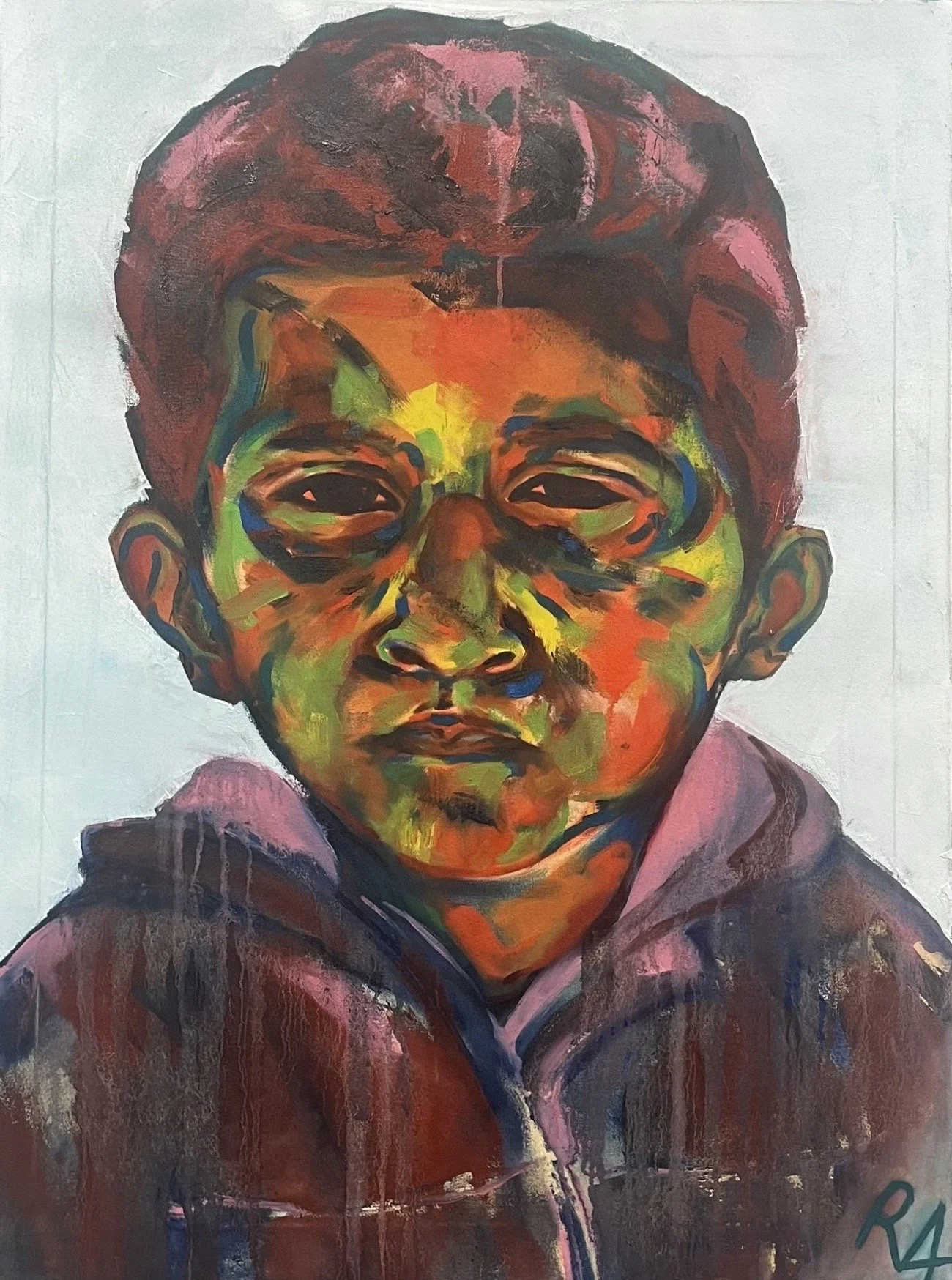Feature by Nika Raiffe
Photos by Audrea Chen
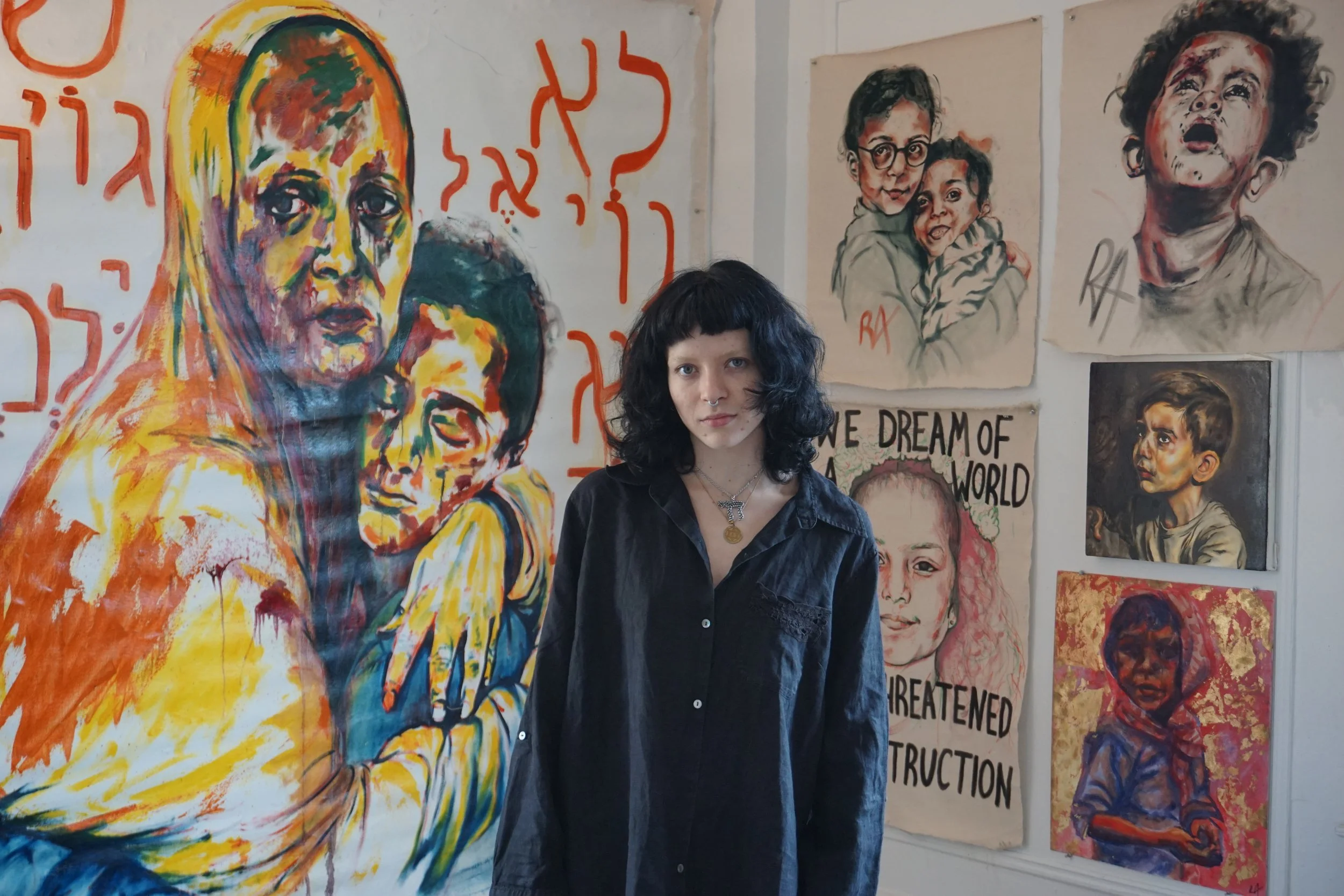
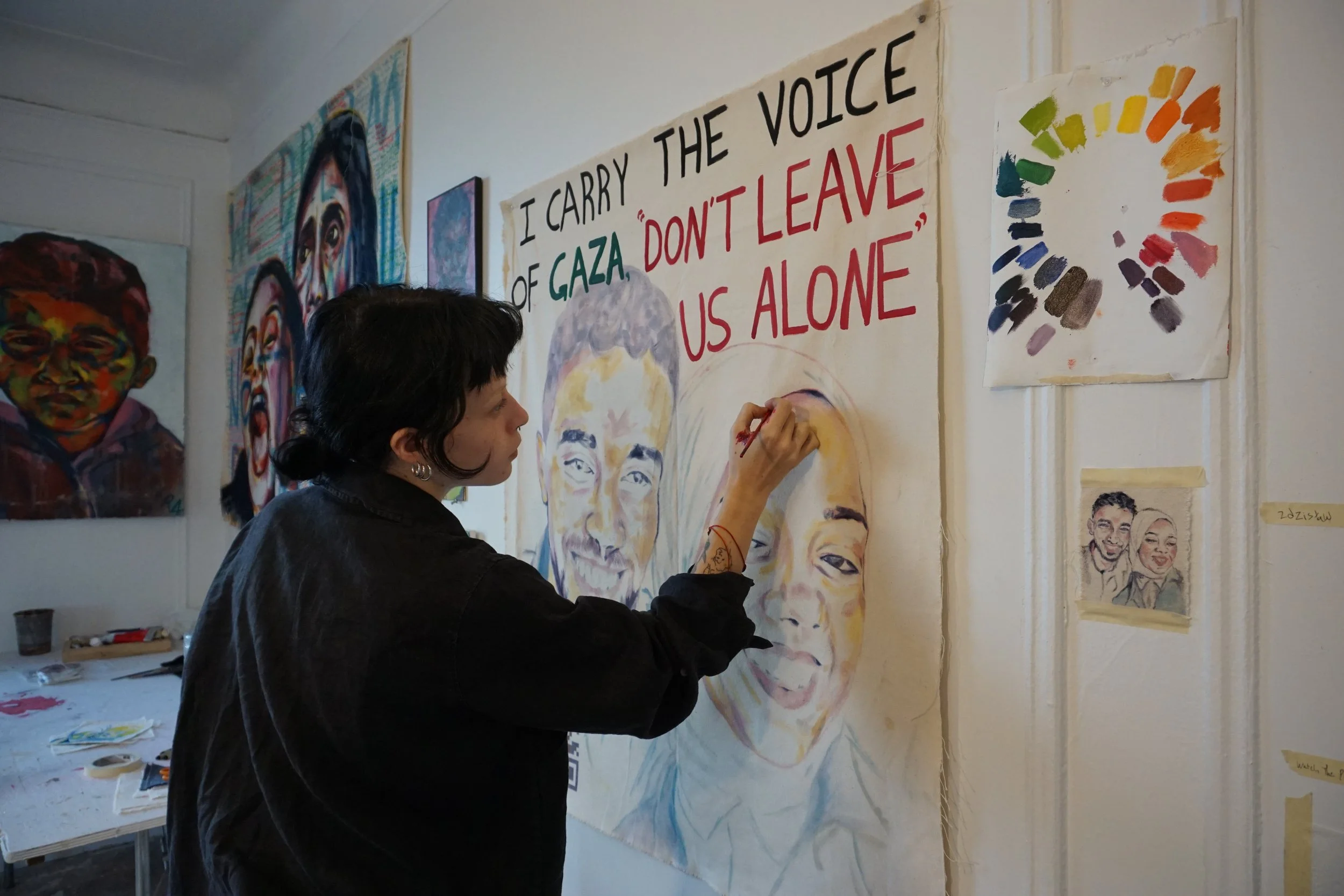
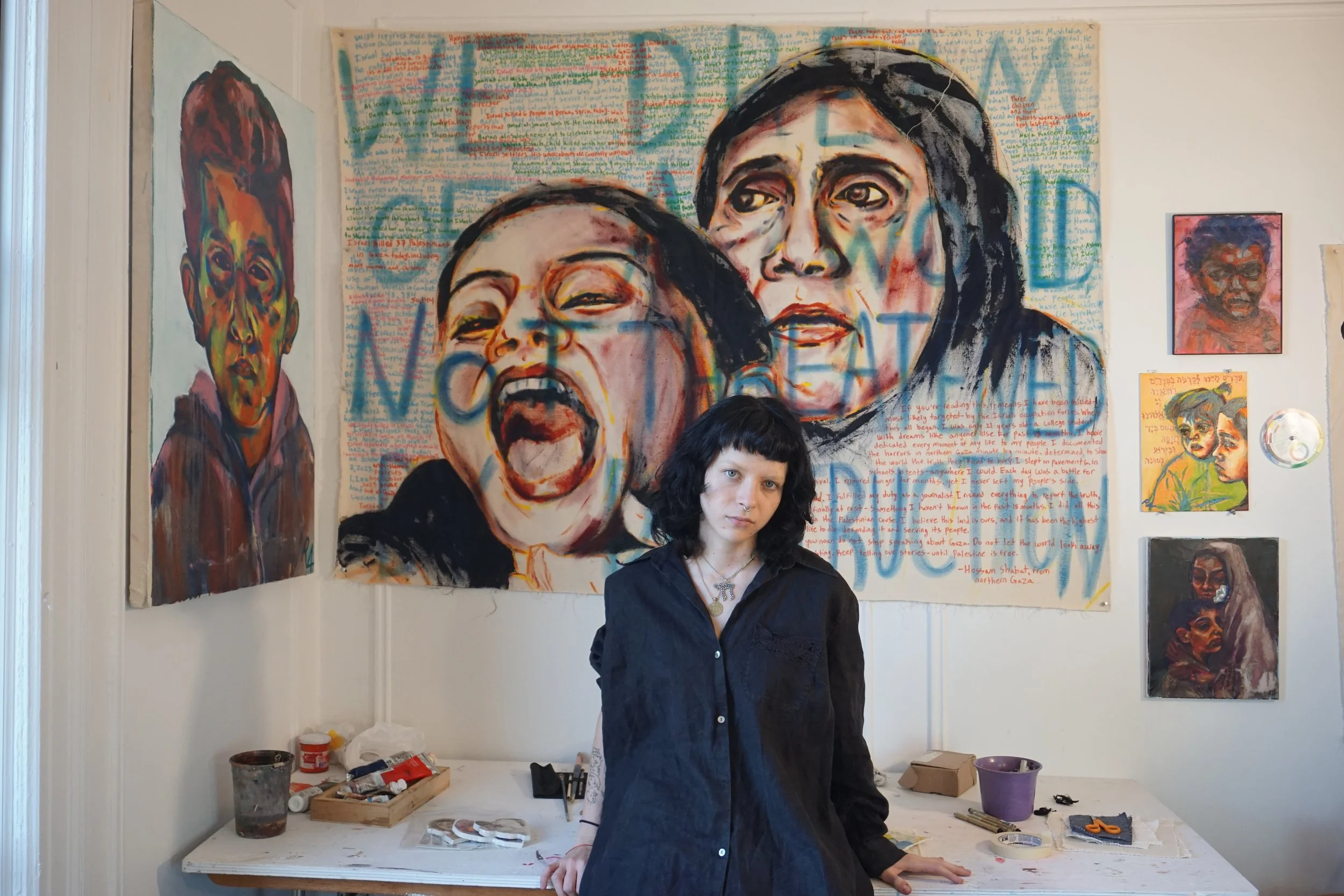
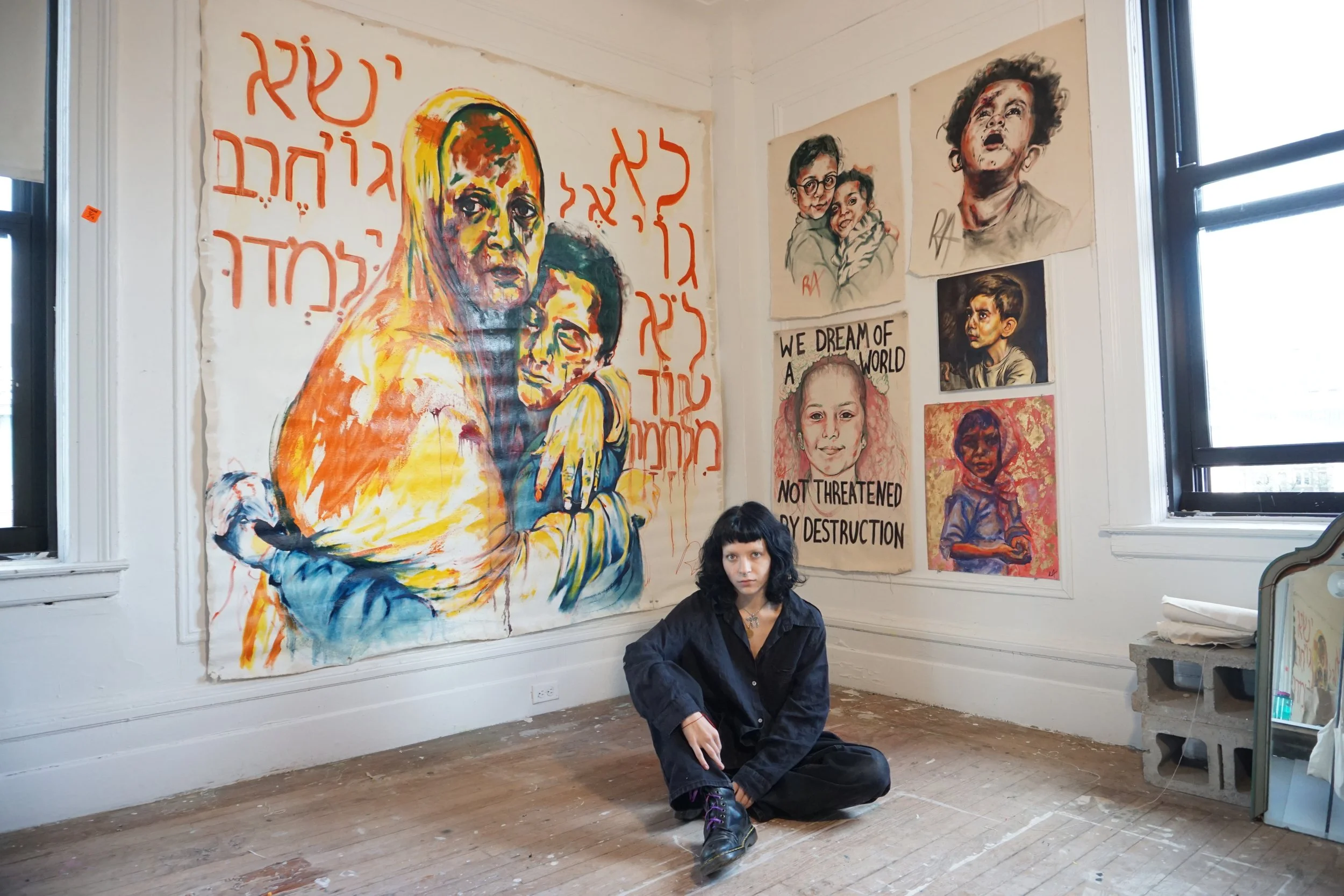
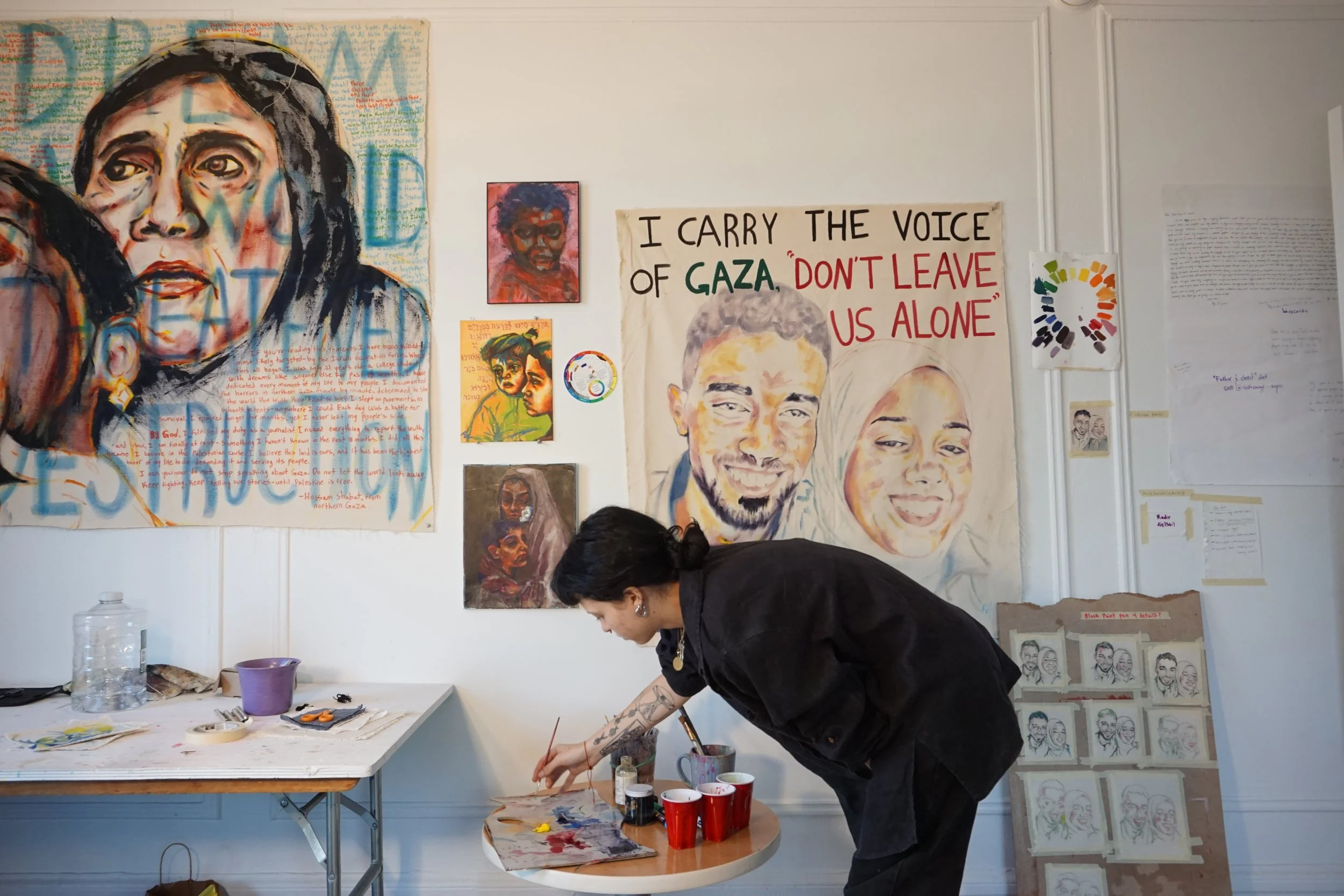
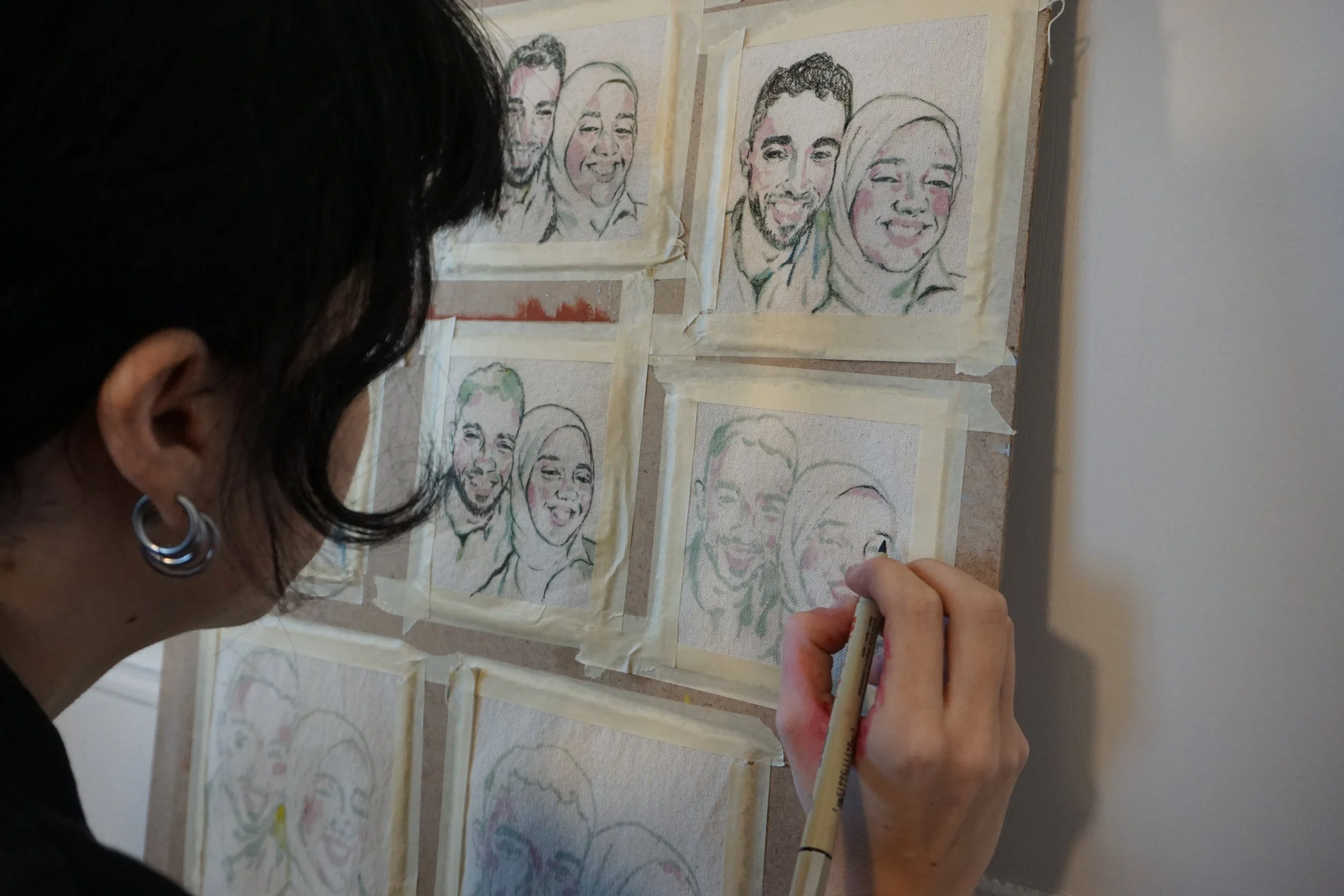
Ray Atlas (BC’26) is majoring in Visual Art and Archaeological Anthropology at Barnard College. She works primarily in oil portraiture. Her visual thesis, We Dream of a World Not Threatened by Destruction, focuses on attentive portrayal of Palestinian families, with all raised funds donated to families in need. Guided by a Jewish upbringing grounded in remembrance and liberation of the oppressed, her art grapples with themes of placehood, memory, and mutual aid. After graduating from Barnard, she hopes to pursue a PhD in Anthropology.
When I meet Ray Atlas in her senior studio, she is wearing all black. She confesses she had slept through her alarm, apologizing for the late start and its trace of chaos. I feel a quiet joy as the formality between us dissolves. When I ask how often she comes to the studio, Ray says she tries not to let every day be an exaggeration. She motions to a bag of pretzels and hummus, and tells me she plans to stay here all day.
She’s busy at work on her two senior theses: her ongoing series We Dream of a World Not Threatened by Destruction, which intertwines portraiture and mutual aid, and her archaeological anthropology thesis transcribing her grandfather’s oral testimony—he survived a death march in Auschwitz, moved to New York, and opened a bakery. Her grandfather’s experiences shape the way she conceptualizes her place in society, yet she is careful not to invoke his voice as justification for her broader work. Her portraiture is an attentive dialogue with both her subjects and her own subjectivity, while transcribing his testimony becomes his portrait. She aims to honor both memories independently.
Informed by her studies in anthropology, Ray is attuned to the ethical responsibility of representation and the long history of artists aestheticizing suffering in ways that turn grief into spectacle, and compassion into consumption. Aware of how perilously thin the line between honoring and voyeurism can be, she strives to let the presence and the vibrant individuality of her subjects move through her work. Each portrait is guided by dialogue and mutual recognition.
Ray grew up in Sleepy Hollow, a small town upstate that inspired one of Tim Burton's movies—the town’s football mascot is the Headless Horseman. In eighth grade, Ray’s art teacher organized a field trip to Bushwick to see street art. “That experience blew my mind,” she tells me, “I knew right then that I wanted to be a mural artist.” If public art is the medium, then mutual aid is the leitmotif: she led her high school’s Interact–Rotary Club and sold her AP Studio Art pieces to raise bail funds during the Black Lives Matter protests.
Her faith and family history converge in the Haggadah her family reads during Passover, a prayer book her father made with friends at Columbia’s Teachers College amid the HIV/AIDS protests in New York City. Ray keeps a copy in her studio. She describes Judaism not as a set of rigid rules but as a framework of ethics: a guidance for living a good life, for being kind to others. “It doesn’t demand that you acquiesce,” she tells me. We meet during the High Holidays, and the timing is not lost on me, as I’ve been reconnecting with my own relationship to Jewish ritual. We look through the pages of the Haggadah together. The first line of the final prayer is “We dream of a world not threatened by destruction,” inspiring the title of her ongoing series.
The series began with two pieces Ray painted during the 2024 Gaza solidarity encampment at Columbia: “I wanted to devote my energy to representing people who were very much silenced,” she says. “I also needed to express my own pain and frustration in a way that could be productive, instead of just wailing at the sky.” Then, she went to Paris for the summer. She hadn’t brought a canvas—just a journal—and began painting portraits of migrants being cleared out by the city ahead of the Olympics. Back in New York, she worked briefly as a portrait artist in Washington Square Park, but by junior year, when she was given her own studio, she felt she couldn’t paint anything else. “This was the only thing I was really thinking about. The only thing that felt worthwhile.”
An Outstretched Arm
At first, the work was instinctive rather than deliberate. Those early paintings are thick with paint, color, and catharsis in a quest to reconcile with intense emotion. She felt the need to represent the humanity of people in Gaza, and hoped that the work might generate support or attention; it wasn’t yet about having a dialogue with the person in pain she was portraying. Over time, she began to understand what these portraits do for her, and in turn, what they can do for others. She realized she wanted to shape them in a way that honored both. That shift began with Miriam, painted on Rosh Hashanah last year—exactly a year from our conversation. Ray’s previous work was all from photojournalism, but she got the photo of Miriam from her GoFundMe. Proceeds from Ray’s painting go directly to her family. “[In the painting,] she’s looking out at you, and it’s kind of a witnessing of our own inaction,” Ray tells me, gesturing to the large canvas leaning against the wall behind me. “Not an accusatory gaze necessarily, but a witnessing of your own actions, or lack thereof. There’s a sense of frustration, but it’s frenzied and bright.” In today’s desensitized world of constant visual exposure, Ray’s portraits offer a different kind of engagement with those images, one centered in active recognition and attention.
Miriam
In her studio, Ray often works on multiple canvases at once, cycling through mini portraits while developing larger pieces. She experiments with texture and integrates text—prayers, news headlines, excerpts from fundraising campaigns—into her work. She likes carrying brushes in her mouth while she paints, like a pirate. “It’s messy, but it keeps me moving.” She looks at the work of photojournalists until a photo stops her, and she can’t stop looking into someone’s eyes—that’s when she knows she needs to paint it. If the reference photo isn’t linked to a fundraiser, she identifies families in similar circumstances and directs any profits made from the work towards their campaigns. More often now, Ray has been finding reference photos through families that message her over Instagram, asking for help.
Young Boy at Nasser Hospital
She painted Mahmoud Al-Najjar while in conversation with his son, Osama, who had fled Gaza to Belgium. “We texted about his daily life, his cooking videos, my life in New York,” she recalls. When the portrait was done, she mailed it to him. “He loved it, and I loved that he loved it. He has it now, and he’s studying French in college. He sent me pictures of the blackboard.” Proceeds from prints are sent to Mahmoud's fundraiser to help him evacuate.
Mahmoud Al-Najjar
Tattoos are another layer of Ray’s medium, a nod to Oscar Wilde’s letters on making one’s life a living artwork and seeing the body as itself a living canvas. It is also a tool that subverts a practice harmfully imposed on her grandfather in Auschwitz, reclaiming it as an instrument of self-expression and love. Birds are a recurring theme: her family assigns one to each member, with Ray’s being a magpie. Some designs are illustrations from the Haggadah. The names of her parents in Yiddish, a language she gravitates towards both because it was spoken by her grandfather and because it invokes resistance and proletarianism. Around her neck, she wears a chunky necklace in the shape of the Chai symbol, discovered on a hiking trip in upstate New York. When asked about her artistic influences, she tells me she’s always loved the drama and chiaroscuro of Caravaggio and Goya, though now she’s obsessed with the Italian artist Ettore Aldo Del Vigo.
As my final question, I ask Ray about what she believes to be the biggest misconception about her. “That my self-expression reflects self-hatred. People sometimes see my tattoos, piercings, or my choice to paint political subjects and assume negativity, but everything I do is rooted in love, remembrance, and ethical responsibility.” There’s a sense of urgency in Ray’s voice, the same pulse that runs through her work—an attentiveness that I find deeply refreshing in today’s world, where fast-paced living often results in looking away from discomfort.






























